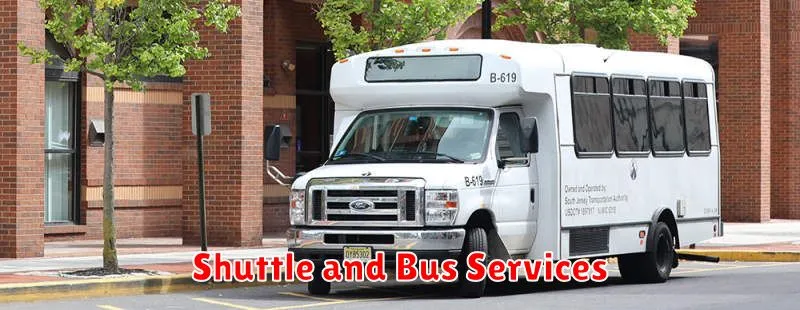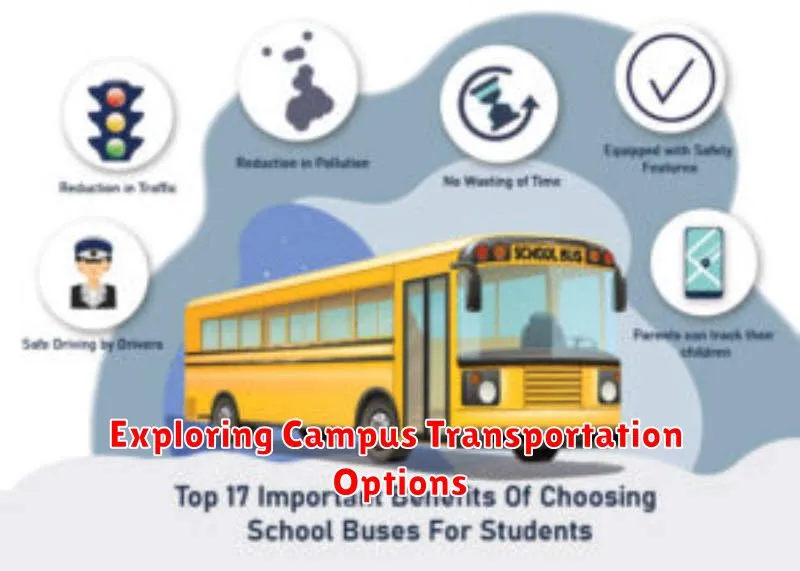Navigating a new campus can be challenging, especially when considering the various transportation options available. This article, “Exploring Campus Transportation Options,” delves into the diverse methods students can utilize to traverse their university grounds effectively and efficiently. Whether you’re a freshman trying to find your way around or a returning student looking for the most convenient campus transportation, this guide will provide valuable insights into the choices available to you. From understanding the campus bus routes to exploring bike-sharing programs and considering the benefits of walking or personal vehicles, we’ll cover the spectrum of campus transportation options to help you make informed decisions.
Choosing the right campus transportation method can significantly impact your daily life, affecting your commute time, budget, and overall campus experience. This article will explore the pros and cons of each campus transportation option, including factors such as cost, convenience, sustainability, and accessibility. We will examine the benefits of utilizing public transportation, including campus shuttles and local bus routes, as well as the advantages and disadvantages of biking, walking, and using a personal vehicle. By exploring these campus transportation options in detail, you can determine the best way to navigate your campus and optimize your college experience.
Bicycle Friendly Campuses
Many universities are actively promoting cycling as a sustainable and healthy transportation option. These bicycle-friendly campuses often feature dedicated infrastructure and programs to support cyclists.
Key features of a bicycle-friendly campus often include:
- Secure bike storage: Covered racks, bike lockers, or designated indoor storage areas.
- Extensive bike paths and lanes: Well-maintained and clearly marked routes throughout the campus.
- Repair stations: Conveniently located stations with tools and air pumps for minor repairs.
- Bike share programs: Affordable and accessible bike rentals for students and staff.
- Safety education programs: Workshops and resources to promote safe cycling practices.
These initiatives not only encourage cycling but also contribute to a greener and more vibrant campus environment.
Shuttle and Bus Services

Shuttle and bus services often provide convenient and cost-effective transportation options for navigating a campus. These services typically operate on fixed routes and schedules, making them predictable for students and staff. Understanding the routes and schedules is key to utilizing these services effectively.
Campus shuttles usually circulate within the campus boundaries, connecting various academic buildings, residential areas, and parking lots. They offer a quick way to travel between classes or reach other campus facilities. Some campuses may also offer off-campus shuttle services that connect to nearby public transportation hubs or shopping centers.
Public bus systems frequently serve campuses, providing access to the wider surrounding community. These systems usually have more extensive routes and operate throughout the day and sometimes into the evening. Students can often obtain discounted bus passes through their university. Checking the local public transportation website for route maps, schedules, and fare information is recommended.
Carpool and Rideshare Programs
Carpooling and ridesharing present excellent opportunities to reduce traffic congestion, parking demand, and your environmental footprint. Carpooling typically involves a regular arrangement between a group of individuals traveling to the same destination, often sharing driving responsibilities and fuel costs.
Ridesharing, while similar, often provides more flexibility. It can involve connecting with other commuters through online platforms or apps for one-time or occasional trips.
Many campuses offer official carpool and rideshare programs that can assist with finding matches and even provide designated parking areas. Check with your campus transportation services for available resources and potential incentives for participation.
Campus Parking Solutions

Parking on campus can often be a challenge. This section explores various solutions implemented to alleviate parking congestion and improve accessibility for students, faculty, and staff.
Parking Permits and Regulations
Parking permits are typically required for all vehicles parked on campus. Regulations vary, with designated areas for students, faculty, and visitors. Enforced regulations help manage the limited space available.
Parking Structures and Lots
Campuses often utilize a combination of parking structures and surface lots to maximize parking capacity. Information on the location and availability of these areas is usually provided through campus maps and websites.
Alternative Transportation Incentives
To reduce reliance on personal vehicles, many institutions offer incentives for using alternative transportation. These can include subsidized public transportation passes, dedicated bicycle lanes, and secure bike storage.
Accessibility for Students with Disabilities
The university is committed to ensuring equal access to transportation for all students, including those with disabilities. A variety of services and accommodations are available to support students’ mobility needs.
Accessible Transportation Options:
- Campus Shuttle System: All campus shuttles are equipped with wheelchair lifts and designated priority seating.
- Paratransit Services: Eligible students can access specialized transportation services for travel within a designated service area.
- Accessible Parking: Designated accessible parking spaces are available throughout campus, conveniently located near building entrances.
Students requiring accommodations should contact the Disability Services Office to register and discuss their individual transportation needs. Advance notice may be required for certain services.

